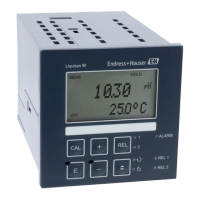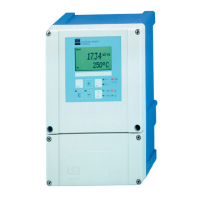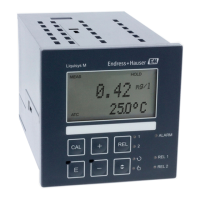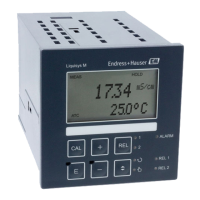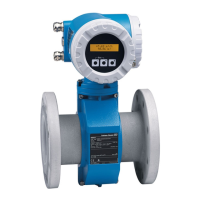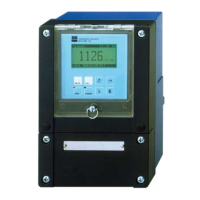Liquisys M CPM223/253 Commissioning
Endress+Hauser 53
Check
The CHECK function group is only available for devices with a Plus Package.
In the CHECK function group, you can select two different monitoring functions for the
measurement:
SCS electrode monitoring
The Sensor Check System monitors the pH and reference electrode for incorrect
measurement and complete failure.
SCS identifies the following reasons for incorrect measurement:
• Electrode glass breakage
• Fine short circuits in the pH measuring circuit, also e.g. moisture or dirt bridges at terminal
points
• Contamination or clogging of the reference electrode
• Leak current for ISFET sensor
The following three monitoring methods are used:
• Monitoring the pH electrode for high resistance (alarm if a minimum impedance is
undershot, approx. 500 k).
This function cannot be selected for antimony and ISFET electrodes (A4).
• Monitoring of impedance of the reference electrode (alarm if set threshold value
overshot).
This function can only be selected for symmetrically high-resistance measurement.
• Monitoring of leak current for ISFET sensors (pre-alert E168 at I
LEAK
> 200 nA, error E008
at I
LEAK
> 400 nA).
a0004337
Fig. 36: SCS alarm
Do not remove the standard electrode from the process without Hold! Since SCS is
measured against PML, no contact between the inner conductor and PML triggers an
alarm. Digital sensors do not use PML.
PCS alarm (Process Check System)
The function AC is used to check measuring signals for deviations. If the measuring signal
change within an hour is smaller than 0.5% (of full scale value of the selected measuring
range), an alarm (E152) is triggered . The reason for such sensor behaviour can be
contamination, cable rupture or similar.
You can monitor the controller activity with the function CC. A malfunction of the controller
is detected and reported thanks to freely adjustable monitoring times (E154 - E157).
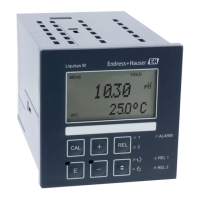
